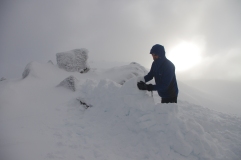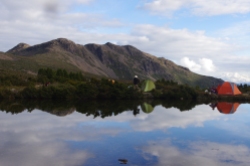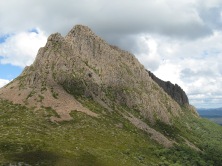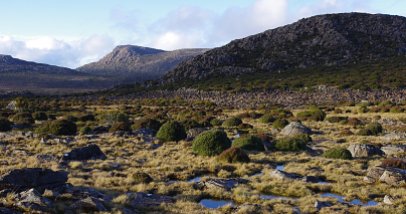If you are a regular reader of Mountain Journal, you will know that I bang on endlessly about climate change impacts on the mountains: more intense fire regimes impacting snow gums and alpine ash forests, declining snow pack, longer droughts and all the rest of it. I probably don’t spend enough time looking at what is happening in the true alpine zones above the tree line.
New research from Griffith University researchers outlines how alpine habitat is responding to climate change and bushfires.
Griffith Environmental Futures Institute Research Fellow Dr Brodie Verrall said the alpine area in the Main Range of the Snowy Mountains was mapped to observe and analyse the changes resulting from the warming climate between 1990 to 2000, 2010, and 2020.
“Ultimately, warmer temperatures, longer growing seasons, declining snow cover and variable precipitation regimes have resulted in the rapid expansion of the woody vegetation,” Dr Verrall said.
A key finding is that shrublines are advancing upslope. This indicates that new climatic habitat is becoming available with climate change and this is the first documented example of this phenomenon in the southern hemisphere. It means that, over time, we are losing the true alpine zone above the treeline where woody vegetation like trees and shrubs dominate.
This process may lead to the decline of relatively diverse alpine grasslands that currently occupy higher elevation areas.
The study found a slight treeline recession as a response to wildfire, which stunts the expansion of subalpine woodland cover and suppresses the upslope advancement of shrublines.
“Wildfire may play an important role in regulating the encroachment of woody vegetation into alpine areas in the future, which would be an entirely new ecological process for this unique area
As Brodie notes: “The changes are likely to have broad ranging consequences for fire risk management, carbon sequestration, water supply and biodiversity.
“It was assumed subalpine vegetation would expand upwards into cooler alpine areas as the temperature rises but our data showed the snow gums expanded within the subalpine into the once treeless patches of the subalpine heathlands after the 2003 fires.”
“It is extremely important to understand what is happening in these alpine areas so we can prepare and predict how the warming climate and associated bushfires will impact these unique ecosystems in the future.
The good news:
“A key surprising discovery is that subalpine woodlands are more resilient to bushfires than previously thought and they are expanding, however the results also showed this is increasing the amount of biomass which could exacerbate future fires.
The not so good news:
“We found the cover of woody vegetation is increasing in the alpine, and we know the intervals between fire events are shortening and the severity of bushfires is increasing.
“Ultimately, these changes could strengthen feedback between shrubs and fire by increasing fire frequency and severity.
As we know, significant areas of the high country has been burnt multiple times since the turn of the century. These fires are happening more frequently than forests are used to and, in a growing number of areas, these ecosystems are starting to collapse (that is turn from forests or woodlands into grassy or shrub dominated environments without an intact canopy).
“It is extremely important to understand what is happening in these alpine areas so we can prepare and predict how the warming climate and associated bushfires will impact these unique ecosystems in the future.
The research ‘The impact of climate change and wildfire on decadal alpine vegetation dynamics’ has been published in Australian Journal of Botany.
























































July 14, 2023 at 8:22 pm
When I interviewed Tim Flannery for Earth Garden, he told me he realised climate change was going to be a threat when he revisited the New Guinea Highlands after a break of some years and found the treeline higher. That would have been in the 1960s or thereabouts I think.